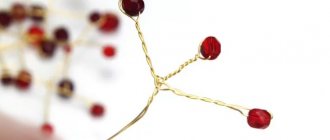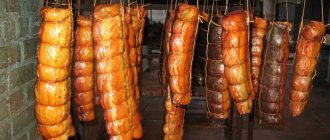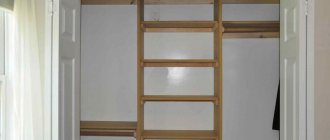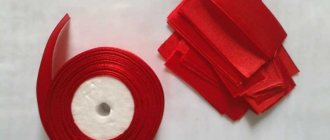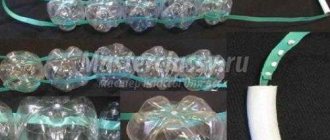A fire in the country is a special pleasure that is not available to us in a city apartment. By making an outdoor fireplace with your own hands, you will be able to enjoy the play of fire more often, cook something tasty on the grill by the fireplace, or simply bask in the warmth on cold evenings.
In order for the fire to look harmonious in the garden, it is better to arrange a permanent place for it that would provide proper fire safety standards and provide comfort.
And, although the outdoor fireplace in the photo may look absolutely luxurious, its construction does not require a significant investment of either time or materials.
You may well choose an option for yourself that you can implement in a couple of weekends.
Design and material options
The choice is quite wide. For a country hearth, any non-combustible materials are used: blocks, bricks, paving stones, paving slabs. You can make a structure from poured reinforced concrete, a well ring or a metal barrel or box.
A durable fire pit requires the use of quality materials, and the design is fundamental.
When food is not intended to be cooked on the fire, a simple design with the function of ordinary decor is performed. If cooking is provided, the structure is equipped with a grate. It is also equipped with additional elements for convenient installation of a cauldron or grill.
Recessed hearth
An example of the simplest option. But it should be installed, observing all safety rules, following the only condition of landscape design, representing a harmonious combination of elements.
The design of the hearth is made according to the shape of the site. Either round or square. The facing material must match the surrounding small forms.
The fire pit is buried in the ground with a small edge above the surface. This prevents water from flowing inside and washing away the soil.
The site is landscaped, furniture is installed, observing approved distances.
Ground or surface fire
Also refers to a simple option using an iron barrel or a welded metal box.
To paint the hearth, use heat-resistant paint. Fire-resistant silicone enamels are chosen. The barrel is sealed. This is its minus. The precipitation that falls into it evaporates. Because of this, the bottom of the barrel needs to be cut out and installed on a prepared site, from which the fertile layer has been removed and a sand or crushed stone cushion has been made. Heat-resistant tiles or stone are laid at the bottom.
How to make an outdoor fireplace out of stone.
In order to make an outdoor fireplace finished with natural stone, we first mark out the hearth's kennels and pour a small concrete pad under the masonry.
The masonry will consist of two layers. The inner layer is a brick layer and the outer layer is made of natural stone.
The upper part of the hearth can also be finished with stone.
In order to use the fireplace as a barbecue, provide a grate for it in accordance with the size of the fireplace.
Such a beautiful fire pit can be placed on the terrace in front of the house, where you can spend truly unforgettable evenings in the country.
Types of fire pits in landscape design
People get a fireplace near the house with a great love for cooking over an open fire. The hearth is an excellent alternative to barbecue and barbecue. You can use it as a home fireplace.
There are several types of fireplaces. The simplest type of fireplace is a brick or stone structure installed in an open area. Other types are more complex, but all of them can be done independently, showing imagination and not forgetting about safety.
Made of metal
Convenient, mobile fire pit. Quickly installed in the country garden. The bowl can be purchased ready-made, suitable for use. The set for the bowl is equipped with a poker, grill grate, lid, and other accessories. I often call a metal hearth a portable fireplace. The product can suit any style of landscape design based on the variety of bowls. Depending on the preferences of lovers of open home fires, bowls are purchased in open and closed form. Some people like a sphere or structure decorated with designer patterns.
Fire pit made from a metal barrel
Such a fireplace can be called an ideal budget option. As a rule, a large number of summer residents have metal barrels, and for many there are no problems with the question of how to make a fire pit in the country with your own hands.
The barrel with processed edges is completely dug into the ground. Or the container is partially hidden underground. The incoming part is decorated and painted with heat-resistant compounds. The fireplace can be considered ready for use.
Fire pit made from a washing machine drum
The basis for the hearth can be a drum from an old washing machine. An option related to the popular topic of how to make a fire pit in the country with your own hands.
It is worth remembering that the material for making the drum is stainless steel. That is why it resists the high temperature of a fire flame well. Holes in the drum allow air into the oven. The building around the hearth can be made of concrete, or made of brickwork. The homemade product is simple and at the same time original.
Made of brick
The brick structure of the hearth usually has a round shape. The logs are placed inside the structure and lit. Or they are laid out on a wire rack. If desired, you can additionally perform formwork and concrete it. After the concrete has hardened, the front side of the fireplace is decorated.
Fireplace on a summer cottage made of stones
The structure turns out to be bulky with a base buried in the ground. Triple the base either from stone or using any other fire-resistant material. Concrete or brick foundations are used. The bowls are installed with two elements. The metal bowl itself is complemented by external stone decoration.
Stone fire pits are stationary. They require a permanent location point. Relocation will require the installation of a new foundation.
How to make a fire pit out of concrete
The shape of the fire pit is square or round. For the last version of the hearth, old metal barrels of different parameters are often used. Rings are cut off in a certain number and size, which will represent the shape of the future hearth. After the concrete is poured and completely hardened, the metal form is cut off. A square concrete bowl is made from scraps of boards and plywood sheets. Pegs serve as fastening elements. Also, removable formwork can be secured with screws or nails.
Concrete block fire pit
Such a fireplace is made very quickly and does not present any difficulties.
The bottom circle is laid out from paving stones. Material with a slight protrusion. The laying is carried out so that gaps are formed between the tiles.
The layout of the top row represents smaller circles. The diameter between the inner walls of the blocks is one meter. This is followed by three rows of block masonry. To secure, the gaps are filled with concrete. The top layer is laid out with a diameter of approximately 80 cm.
Safety rules for setting up a fireplace in the country
Since we are talking about an open fire, it is necessary to take into account all safety requirements and rules.
- The fireplace must be at least 3 meters away from all types of buildings. Ideally at 3.5-4 and beyond.
- The place where the fire is made must also be at least 4 meters away from trees and shrubs.
- According to the requirements of supervisory government agencies, a fire cannot be located next to fences, as well as on the border with neighboring areas and the street.
Thus, the most optimal location for a fire pit on a standard plot of 6 acres would be a clearing in the middle of the plot.
Gazebo with fire pit
The location of the outdoor fireplace can be arranged in an open or closed gazebo. A mandatory element in this case is a chimney and an exhaust hood. Often such buildings are called Scandinavian houses. The design with a fire bowl inside resembles a hut or tent. Here you can relax comfortably with friends and cook delicious food. If the gazebo is closed, nothing will interfere with family relaxation or friendly gatherings. No rain, no wind, no snow.
Outdoor fireplace made from scrap materials.
For those who like to use scrap materials, there are also beautiful options for an outdoor fireplace.
For example, you can make such a beautiful hearth from an old basin and the remains of stone and metal.
In fact, any durable metal will do for the inside of the fireplace.
This metal can be a washing machine tank.
For it to function, it is enough to weld the legs to it.
Or you can add minimal brickwork. It's not a lot of work, but the difference is noticeable.
Sometimes a fire pit is placed in a recess in the area - this technique is used for a windy or noisy area, this creates a more calm and quiet atmosphere around the fire pit.
Patio fireplace
This is not an electric fireplace, but such a fireplace is a great idea for a pleasant family or friendly holiday. A dacha with a recreation area is the dream of most owners of suburban areas. A patio with a fireplace can be installed anywhere on the site. It is carried out in the form of a separate open building or closed, adjacent to a house or other building.
This design is stylish, but quite expensive. Performed in different versions. One of them is a patio with a fire pit in the center. The area around is being developed. Comfortable chairs and tables are installed. The most important thing is compliance with safety measures.
Outdoor fireplace made of metal.
It is not necessary to use leftover household appliances for the fire pit.
You can simply buy a sheet of galvanized metal and weld a simple structure for the fireplace from it.
The only drawback of this design is that its walls become seriously hot and it is necessary to isolate the fireplace from flammable surfaces.
Fire pit with grill photo examples
It is placed near the gazebo or moved to a covered seating area so that the grill is protected from precipitation.
The hearth design is made from a deep heat-resistant container with any shape. A mandatory cover is provided. All parts included in the design are heat-resistant. The product is made of concrete blocks and refractory bricks. They use metal, ceramics, and natural stones.
The hearth is made of a semicircular curb and paving slabs.
Concrete blocks are produced not only in the form of rectangles; semicircular concrete curbs are usually used to fence trees.
Such concrete blocks are perfect for creating a small outdoor fireplace.
If semicircular blocks cannot be found, pay attention to paving slabs. It turns out that using it as bricks, you can also make a fireplace for your summer house.
Fire pit in the garden photo
Building a fire pit is very simple. The main tool is a shovel. The hole is dug to a depth of half a meter. The solution is being prepared. Portland cement is mixed with sand.
Stones are laid out in the first row. Concrete gravy is made under them. Drainage is provided by a grate placed at the bottom or a metal sheet with holes.
After completion of the masonry, the space between the walls is filled. They use the remaining soil left after digging a hole.
Method for laying a brick fire pit without using mortar
The stability of the fireplace construction depends on many details that must be taken into account during the construction process. Particular attention should be paid to the principle of laying bricks. The walls of the hearth are built around the circumference so that the ends are tightly connected, then the wall of the hearth on both sides will be smooth without gaps and cracks.
After laying the bottom row, build the next one and so on until the expected size of the fireplace. For the last row there is a special composition that is used during installation. At the final stage, all errors are covered with ordinary concrete: the gaps formed between the bricks are closed, unevenness is smoothed out, tamping and leveling are done.
The difference between the two methods of building bricks is small. In the second case, you need to carefully fill the seams with mortar and control the evenness of the installation. The procedure is simplified by the absence of the need to trim the rows after the creation of the hearth is completed.
Now we can equip a playground around our brainchild so that we can fully enjoy the magic of the play of flames under a star-strewn night sky in the company of friends.
Firewood storage facility
At a close distance from the fireplace there is a wooden stand and a canopy where firewood is stored. The structure is made of 20x40 mm boards using fastening metal corners or cut 45x45 mm bars. Screws are also required for assembly. To store logs, ventilation must be provided. The canopy protects from precipitation.
Briefly about the main thing
If you want to have a permanent place to start a fire in your dacha, you can buy a ready-made fire pit. Depending on the installation site, such products can be stationary or portable; they may be equipped with a grill grate, a tripod for a cauldron and a lid. They are made from forged and milled steel, cast iron, copper, ceramics, artificial and natural stone. They are not cheap, but you can make a fireplace yourself by preparing a fire pit and laying it out of fire-resistant elements: concrete blocks, stone, brick. Such a fire pit can be deepened into the ground or built on its surface. The portable hearth is made of metal by welding and forging.
Step-by-step instructions for making a round fire pit
Step-by-step instructions for making a fire pit from brick
It is recommended to make a fire pit with a round hearth on the basis of a concrete foundation, since a round fire pit is less stable and can move when the soil softens. The sequence of actions for collecting a fire pit will have certain differences, although in general the algorithm will be identical:
- Using crayons and a tape measure, mark the land area. Please note that the marking issue should be approached very carefully, since a circular hearth is more sensitive to design errors. After this, dig a hole 15-20 centimeters deep, level its bottom, and you can add a thin layer of sand.
- Install a round wooden formwork, and then pour the concrete mixture into it. The structure must stand until the concrete dries - that is, 25-30 days. It should be noted that a round fire pit is less stable, so the concrete needs to be given a few extra days to dry completely.
- After the concrete has dried, you can begin installing the fireproof layer. Most craftsmen do this: a small marking is made on the concrete, and then refractory bricks are placed vertically on it along a rounded path. To secure them, take a thin rope or fishing line and tie it around the perimeter of the structure.
- After this, a thick building mixture is prepared, which is poured into the resulting recesses between the bricks. To improve curing, you can also make wooden formwork to fit the brickwork and install it (that is, make the formwork first, and then pour the mortar).
- Now you can begin exterior cladding using a second decorative layer based on red brick. Brick blocks are mounted horizontally with a slight “tuck” to create a rounded hearth. Adjacent bricks are coated with mortar, which will hold them together.
- Once the structure is dry, it is recommended to drill holes in the bricks to create an oxygen supply system. You can install a decorative stone or tile on top of the masonry so that the resulting fire pit is pleasing to the eye. Also, do not forget to pour a layer of gravel 15-20 centimeters thick at the bottom of the building.
Bonfire with frost (“advanced” version)
It differs from the previous, unprocessed version in thematic decor. Just look closely: it doesn’t take much longer to make, but it looks like an exhibit at a hand-made exhibition.
Materials and tools: twigs and sticks, preferably with knots, stones, LED garland, foil, strips of lace (lace braid or cut old curtain), fabric glue or PVA, aluminum foil, paint brush.
How to make a decorative fire with frost:
1. Wrap each stick in foil to completely cover the tree. This is necessary so that the lace does not stick to the tree.
2. Carefully coat each strip of lace with fabric glue, then wrap it around the foil rods. Wrap the lace so that there are no gaps left. When all the sticks are completely covered, set aside and wait until completely dry (it’s better to leave it overnight).
3. When the twigs are ready, use a sharp knife to cut the lace along the entire length of the stick. Don't be afraid to make a cut too deep - the foil will protect the tree from damage.
4. Remove the sprigs from the lace shell. Then carefully peel off the foil and remove it as well.
5. Now is the time to build a fire! Lay out the outlines of the fire pit with stones and place a garland inside. And the finishing touch: secure the lace “branches” in the shape of a hut. They are light enough to hold without falling, but we still recommend securing the structure with glue. Just in case.
Elegant winter decor is ready! Enjoy a cozy frozen fire, as if created by the Snow Queen herself.
And here's another variation on the same theme:
If you live near the sea or river, look for large stones with rounded (water-ground) corners. As for the garland, you can make a “fire path” from it; this option is good for “special occasions” and creating a romantic atmosphere when candles seem too banal.
What's a New Year's fairy tale without a luxurious bonfire?! Do you remember how we warmed ourselves by the fire for Twelve Months? Let’s try to “light” a fire with our own hands. A cool decoration for a festive performance and a cozy interior element for the whole winter.
A bright fire made of felt, smoldering coals made of sticks, foil and New Year's garland - it is impossible to take your eyes off such beauty. Be sure to make a safe New Year's bonfire at home or offer to make an interesting craft for your friends for a school performance. The New Year's decorations will certainly be appreciated by both guests and spectators.
How to make a fire from felt?
Soft and pleasant to the touch felt will be an excellent basis for creating a New Year's bonfire. And bright colors will leave no chance for him to go unnoticed.
You will need:
- felt in yellow, red and orange colors,
- scissors,
- threads or glue,
- filler (synthetic fluff) - optional,
- paper templates,
- sticks and stones.
Experience using the hearth and improvements
A couple of days later, after letting the solution dry a little, I carried out a test - I lit a fire for the first time. I was pleased with the result. Firewood, branches, leaves - everything burned perfectly, nothing fell outside the hearth, ash and coals remained inside.
Looking at the coals remaining inside, I thought that the rain would create dirt and flow outside the hearth, leaving black stains. Therefore, I made a round wooden table top. And in the normal state, until we start a fire, our fireplace is covered - it’s always dry inside. I collect small flammable waste from the site directly there. It is not visible under the lid, and it does not get wet from rain, it is always dry, ready for the fire.
The first inconveniences and destruction were caused by children. They run, play around, frolic. One pushed the other, who leaned harder from the side and moved the brick of the top row. Still, the masonry mixture does not have the properties of cement and requires high temperatures for strength and sintering. But an outdoor fire cannot be heated in a short time so that the bricks heat up to a high temperature and the mixture sticks. Yes, I didn’t want to do this kind of work - how much firewood would need to be spent to heat the bricks.
So I decided to use special glue to strengthen the top rows. On occasion, I bought ready-made glue-mastic in the store and glued those bricks that the children moved. After this strengthening it became much better. The bricks can no longer be moved by simple force and the masonry is not afraid of accidental shocks.
I remade and glued the bricks not all at once, but as they came off. Not everyone began to move at once. Periodically, one or two bricks from the top or second row began to appear, moving. And I re-secured them with glue instead of masonry mixture.
I advise you to immediately put it on glue so as not to redo it later. I never had to re-glue more than two rows. The lower bricks stand firmly pressed down by the weight of the upper rows.
Types of fires
To properly set up a fire pit, fire pit, or fire pit with your own hands, you need to know what kind of fire would be best to build in the given circumstances. In general, fires are divided into:
- Heat - culinary, household and heating.
- Light – signal night and decorative.
- Smoke - signal daylight and smoke smoke from blood-sucking insects.
There are hundreds, if not thousands, of types of fires that combine these functions to one degree or another. The most common of them are shown in Fig.
Main types of fires
Hut
This is mainly a light decorative fire. Pioneer fires in the old days were made with a hut; Many ritual fires are also made in huts. A fire hut is suitable for quick cooking if it is possible to hang the cooking utensils high enough, because gives a strong compact stream of hot air. The efficiency of a hut fire is very low even for a fire; the wood in it burns out quickly. Also, a hut fire, if not built in the hearth (see below), can spark strongly even in the absence of wind. On damp wood it does not burn or goes out without regular fanning. Ignition is from the bottom from the inside, kindling (see below) is placed in the fire in advance. It is easily extinguished if you let the wood burn out completely. A properly laid out fire hut requires virtually no supervision, because when it burns out, it settles into a cone.
Well
Bonfire-pyramid
In all its properties it is similar to a hut fire, but has a higher efficiency and can be built on raw wood. It can also, using dry wood, serve as an economic and technological one: the temperature in the log house reaches 1200-1300 degrees. A type of fire-well, the fire-pyramid (see figure on the right) is a good, economical cooking fire, because combustion in it is predominantly superficial. The tiers of the fire-pyramid, except for the ground one, are laid out entirely; ignite it at the top. It is difficult to extinguish a pyramid fire, so you need to extinguish it carefully and carefully.
Star
This is a slow burning, dry wood fired, very economical cooking fire; partly decorative. When diluted in a bowl (see below), it requires almost no supervision. When breeding on a plane, supervision (moving firewood) is necessary on a regular basis. It does not spark in the wind, is easily extinguished and can be lit on the same unburned firewood, therefore it is most suitable for repeated use in an unequipped camp site (a person on duty must remain in the camp, or the firewood for lighting will need to be dug up again). It is unsuitable as a smoker and goes out.
Hunting
This fire begins the family of so-called. taiga fires. Firewood for a hunting fire is not necessarily laid out in perpendicular layers, it can be laid out obliquely. Unlike a star fire, a hunting fire can be lit using damp wood of different sizes and, if you throw damp grass or leaves on the fire, use it as a smoker. The hunting fire burns for up to 3-4 hours without sparking. The kindling is on top, like a pyramid fire; You also need to carefully extinguish a hunting fire.
Smoker
Single-layer (single-tier) hunting fire, specifically insect smoke; Not suitable for cooking or heating. A smoker made of 3-4 damp logs, the thickness of a hand or less, covered with grass, can smolder unattended all autumn night, if the ends of the logs are not closed - from there there is an air flow to the fire. It does not spark, does not scatter coals, so it is of little danger in the forest, but you need to carefully extinguish the smoker, like any smoldering fire (pyramid, hunting fire). Kindling - from above.
Nodya
This fire is also called a night fire, because Nodya, unattended, can heat and drive away bloodsuckers for up to 12-14 hours. Nodya does not spark, but drops coals, so the fire pit under it must be cleared to the sides of flammable materials for at least the length of the logs (1.5-2 m). Lay out the node perpendicular to the wind; overnight accommodation under a canopy is arranged on the leeward side. It is the most difficult thing to completely extinguish a node; The only reliable way is to pour plenty of water (or cover it with snow) and cover it with earth to the thickness of the log. Nodya is suitable for spending the night in the fall or at slightly sub-zero temperatures, but it will not save you in the fierce winter in the taiga.
A typical node is laid out from 3 even, slightly damp logs, one foot thick or more. It is difficult to find or prepare fuel for a node even in the virgin taiga, so a node is often built from 2 logs between branches stuck into the ground (on the left in the figure), but such a node is much more dangerous: suddenly the wind changes and blows along the logs, the fire will flare up to strong flame, one of the supports may burn out, and then the flaming log will roll far away onto the flammable bedding or fall on the sleeping person. The nodya is ignited from the middle (in the center in the figure); it requires specially prepared kindling and some experience.
Bonfire of Nodya
Note: Without paper, straw and flammable liquid, a fire is lit with incendiary sticks made of resinous wood, see figure:
For information on kindling for a fire using improvised means away from populated areas, see also the video below:
Video: types of kindling for a fire
Cannon and bombnak
Small hunting fire-bomnak
Surviving in the forest in winter is not a comfortable rest in a comfortable home, and it is generally impossible to fall asleep in the open air in the cold; you may not wake up. Therefore, if the cold has set in, the log is laid out with a cannon downwind (in the top picture on the right), the overnight stay is arranged opposite the vent (where the logs are raised), and the fire is lit from below. Now you will have to somehow sleep through the night, moving the logs every 1.5-2 hours, but there will be much more heat and the logs can be taken from dead wood, crooked, of different sizes. The Nodya-gun is actually an Evenki bomnak fire - the most perfect of the taiga fires, with which an experienced, hardy person can spend the night in the taiga in 40-degree frost. Bomnak can be grown small in fairly warm seasons (see picture on the right). A small bomnak is a universal camp fire: it heats well, consuming little fuel, drives away midges with smoke, and a pot of water placed at the vent boils in 10-20 minutes. How to build and maintain a traditional Evenki bomnak fire, see next. video guide:
Video: Evenki bomnak for spending the night in the taiga
Special fires
About special-purpose fires, you need to know first of all how to make a fire - the signal pyramid, on the left in Fig. To signal at night, the frame of the signal pyramid is covered with dried wood (ignition is from the inside from the platform). To give a signal during the day, the flammable frame is hung with branches with damp leaves, damp grass, reeds, etc. A column of smoke or fire with sparks from a fire - a signal pyramid from a search aircraft/helicopter flying at an altitude of 1-1.5 km, in clear weather is visible at a distance of up to 120-150 km (!).
Signal, Polynesian and invisible (robber) fires
Polynesian
The Polynesian fire (in the center in the figure) has a different specificity - it is economical, like a pyrolysis oven. As you know, the islands of Oceania are always warm, but there are practically no natural resources, incl. fuel. And the Polynesian fire acts like a pyrolysis furnace: the wood burns only enough to ensure thermal decomposition of the wood, and the main flow of heat comes from the pyrolysis gases burning out above the mouth of the fire. The Polynesian fire is exclusively a culinary fire: it does not smoke, does not spark, does not throw coals, and does not heat to the sides. In the forest, it is even less dangerous than a smoker. It is easily extinguished by closing the vent: the Polynesians made such fires during their voyages on pirogues in palm fiber bags with sand. They drowned it with caught driftwood. See, for example, Te Rangi Hiroa (Peter Buck) "Mariners of the Sunrise". This is a thorough scientific, solidly reasoned work.
Robber
The Russian version of the pyrolysis fire is the invisible robber, on the right in the top figure. It requires some digging with tools, but you can place cooking utensils on the fire pit. The robber's fire has long been used by the military; Special forces are still trained to breed it.
Note: it is difficult to say which pyrolysis fire became the prototype of the rocket stove, but it operates on the same principle.
Fire from a barrel
Fire pit made from a barrel
A pyrolysis fire pit can be made from a barrel by digging it in approx. half into the ground so that it doesn’t quickly burn out and the fire doesn’t immediately go deeper. This version of a fire pit uses surface combustion that is very economical and not picky about fuel quality, so a barrel fire is perfect for burning waste without smoke and with minimal emissions of greenhouse gases. Under one condition: the previous load must burn completely before the next one, otherwise the fire will smoke heavily and the fuel will not burn completely.
Wooden Primus
This is what the fire is called: an Indian or Finnish candle. It is also economical, but requires high-quality wood fuel, and is more dangerous because drops coals. To light an Indian candle, you need to split a piece of log or saw it partially (on the left in the figure) and set it on fire in the center, along the core of the wood. The Aborigines, American and Lappish, looked for dry, split pieces for candle fires: the number and location of the splits/cuts do not play a big role, as long as the ignition was from the core.
Bonfire Indian or Finnish candle (wooden primus stove)
A wooden primus fire produces a strong, sometimes humming flame, on which the water in the dishes boils as quickly as on a gas stove (in the center and on the right). The log is as thick as a foot and approx. long. 0.5 m is enough to cook lunch for 3-4 people or heat boiled water.
A wooden primus can also be made from a dry, split stump, which will then burn down with its roots, but this should never be done in the forest, due to the danger of the same creeping fire. However, on your own site in this way it is permissible to get rid of old stumps that interfere with the development without uprooting, if their location meets the fire safety requirements, see above. To make the burned stump burn faster and deeper, you can pour 1/4-1/3 (no more!) of a glass of waste or vegetable oil onto it before igniting.
Recommendations and common mistakes
The hearth can be made as simple as possible or a complex design solution can be implemented. In any case, these recommendations will help:
- To build a fire pit, use the same materials that have already been used on the site. This is important for a harmonious environment.
- Installing a fire pit above the ground is more convenient to use than a buried fire pit. It is better to raise it to a height of 15-60 cm.
- A bowl with sides is more convenient. They can be created wide, using them as a tabletop.
- It is recommended to leave at least 2 m from the fire pit to the benches. This is done not only for safety, but also for the comfort of people.
- It is effective to create a retaining wall on the area around the fire pit. It will protect the flame from the wind and can serve as a backrest for a bench.
A recess can be created not only for the fireplace, but also for the entire area around it - this will protect from the wind and increase fire safety.
When organizing a fire pit, the following mistakes are often made:
- The metal is too thin for the bowl. It won't last long because it will burn out quickly.
- The hearth is made of ordinary brick. It will not last long and will burn out. It is better to make a fire pit from fireclay or clinker bricks.
- Organizing a fireplace near buildings, fences, trees, bushes. Failure to maintain the interval to such objects significantly increases the risk of fire.
- Lack of protective area around the fire pit. In such conditions there is a high risk of fire.
Device and dimensions
The fire pit can be round or rectangular. It can be so deep that it is flush with the ground, or it can be partially buried, with slightly raised walls. There are options that are generally located above ground level - they are placed on a previously prepared site. So the choice is yours.
The fire pit can be completely or partially buried
There is no point in arguing about forms. Round ones are more convenient - we stack the firewood in a hut. But rectangular ones are easier to build, especially brick ones. Here all the techniques are known - the masonry is carried out like an ordinary wall. The wall thickness is just a quarter of a brick.
Those who are deciding how to set up a fire pit in the backyard of a house, in a country house or in a garden plot usually have several questions:
- What size should a fire pit be?
- Do you need a blower, if so, how many, what sizes, how to make them and where to place them?
- Should I install a grate or not?
- How to make cleaning the fireplace easier?
In fact, the first two questions are interrelated. If the dimensions of the fire bowl are quite large - a meter or more in diameter, you can make the walls solid, without a blower. If less than a meter, you will have to make holes for air intake.
Outdoor fire pit type
It is better to make a blower not from below, but in the walls. Their number - two or four - is diagonally opposite each other. Small holes are left in the wall by breaking off a piece of brick (about a quarter). If necessary, they can be laid with the same, slightly trimmed, quarters. It is not worth making a vent from below: with such a design, ash flakes often fly around the area during the “operation” of the hearth - they are carried away by the air flow, which with such a design is difficult to regulate.

